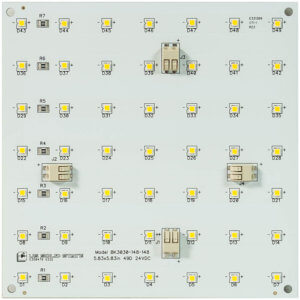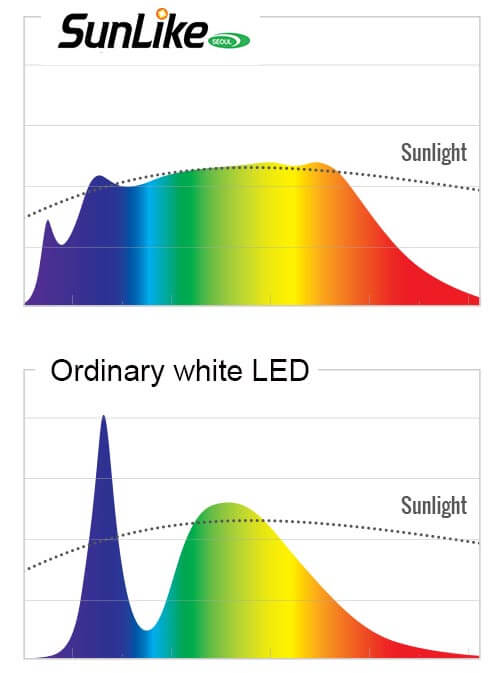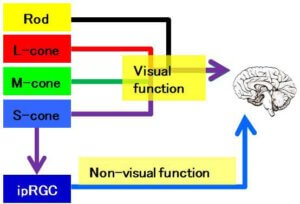
Light Modules with SunLike LEDs For Places where Color Matters
- Reduced blue
- RG-1 grade in Eye Safety certification
- Art
- Fashion
- Food
- Hospital lighting
- Photography / Videography
- Wellness / Humancentric lighting


How we See Color and Why CRI Matters

Let’s talk color; but first, how do we see color? The human eye gives us the sense of sight; from which, we can interpret colors, shapes and dimensions of the world around us by processing light reflecting or emitting from an object. We can see in bright light or dim light, but not in the absence of light. The eye focuses light from our surroundings by refraction through the cornea then the pupil through the lens to the retina at the back of the eye. The iris or colored part of the eye regulates the size of the pupil which in turn controls the amount of light passing through it. The retina is where photons of light are converted into electrical neural signals to be sent along the optic nerve into the brain for interpretation. Distributed within the layers of the retina are tiny photoreceptive nerve cells known as rods and cones. These work alone or together to adjust our visual system. Within the rods and cones are protein pigment molecules called opsins, which absorb a photon of light and transmit the signal through transduction into electrical impulses. Rhodopsin is for light reception in rods and photopsin is for reception of colors of light in cones. The brain can detect as little as one photon of light. There is a third type, melanopsin not thought to be involved in conscious vision, which mediates the pupil reflex and is involved in setting the body’s biological clock controlling circadian rhythms. a. Rods contain only one type of light-sensing pigment making them monochromatic
SunLike LED modules provide light similar to sunlight. Considering the full-color spectrum of the SunLike LED colors in the products being lighted are shown with full-color fidelity.
Reduced blue makes the light from a SunLike LED module better for eye health and reduces disruption of the circadian cycle. Blue-rich light suppresses melatonin and enhances dopamine, serotonin, and cortisol production. Wavelengths of 460–480 nm are more effective compared to monochromatic light of 555 nm in phase-shifting the human circadian clock.
Seoul Semiconductor is First in the World to Receive Low-Risk Eye Safety Certification for its natural light SunLike LED
Eye Safety certification is a rating based on safety from analyzing the LED wavelengths. Blue light can be beneficial to mental health and it can be damaging to the eyes. Blue light has a mood-altering effect and can reduce Seasonal Affect Disorder. At the same time, there is some evidence energetic blue light is damaging to some retinal cells thus contributing to AMD and eye fatigue. Sunlike LEDs have reduced blue output so are less destructive to the retinal tissue.
SunLike received the RG-1 grade in Eye Safety certification with its natural light LED. The RG-1 grade is granted to a safe light source for which there is no biological risk, even if our entire lives were spent exposed to the light source.

